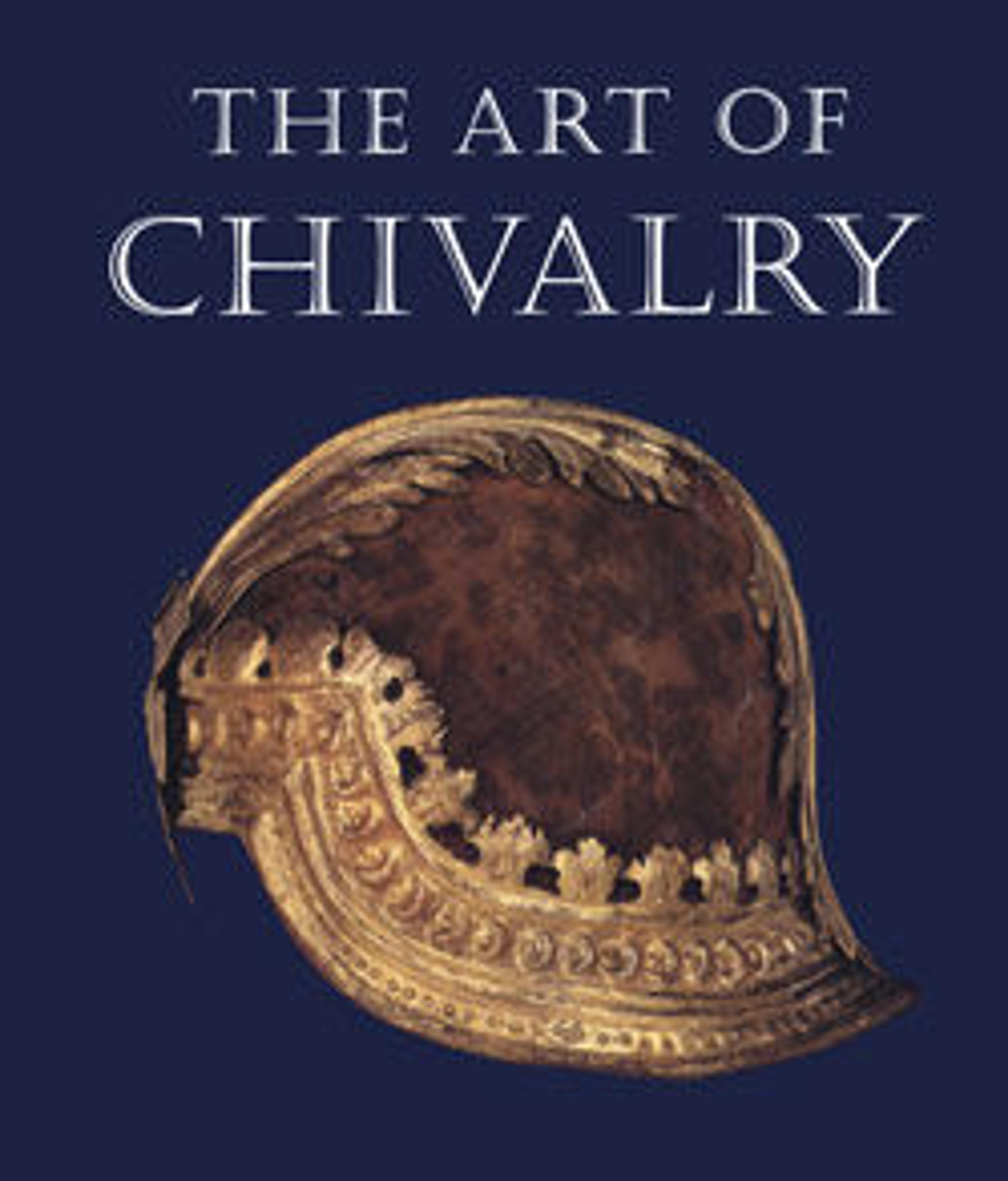Halberd
The elaborately pierced body of the halberd head consists of symmetrical floral scrolls, with a fleur-de-lis in its center; one side has a concave axe blade engraved with a crescent moon, and on the opposite side a sharply down-turned beak. A narrow spear blade is attached at the apex by ring moldings, the center ring inlaid with brass, and is also engraved with foliate scrolls. The tubular socket is attached to the blade by ring moldings, two near the upper end, one at the base, the larger two rings inlaid with brass. The shaft of wood is studded with nails and painted black overall, and it terminates in an iron cone.
The stout fighting halberd of the Swiss (see acc. no. 14.25.51) was transformed in the sixteenth century into the ceremonial weapon of palace guards throughougt Europe, and by the seventeenth century had been adopted by the military as a symbolic weapon of rank for sergeants. This halberd may have been carried by a sergeant, but the quality of its delicately pierced and engraved design suggest that it was a specially made piece rather than one of common military issue. Decoratively pierced and engraved halberds were also carried by noncommissioned officers in colonial America, the American-made halberds being copied after European examples of this type.
The heavy foliate scrolls that decorate this piece reflect the seventeenth-century baroque taste, and the foliated strapwork on the spear blade recalls the ornament of Jean Bérain the Elder (1637–1711). The general lightness and delicacy of the decoration, but without a hint of the rococo, suggest a slightly later dating, perhaps to the first quarter of the eighteenth century.
The stout fighting halberd of the Swiss (see acc. no. 14.25.51) was transformed in the sixteenth century into the ceremonial weapon of palace guards throughougt Europe, and by the seventeenth century had been adopted by the military as a symbolic weapon of rank for sergeants. This halberd may have been carried by a sergeant, but the quality of its delicately pierced and engraved design suggest that it was a specially made piece rather than one of common military issue. Decoratively pierced and engraved halberds were also carried by noncommissioned officers in colonial America, the American-made halberds being copied after European examples of this type.
The heavy foliate scrolls that decorate this piece reflect the seventeenth-century baroque taste, and the foliated strapwork on the spear blade recalls the ornament of Jean Bérain the Elder (1637–1711). The general lightness and delicacy of the decoration, but without a hint of the rococo, suggest a slightly later dating, perhaps to the first quarter of the eighteenth century.
Artwork Details
- Title: Halberd
- Date: ca. 1630
- Culture: French
- Medium: Steel, wood, pigment, iron, copper alloy
- Dimensions: L. 90 in. (228.6 cm); L. of head 18 1/8 in. (46 cm); W. 6 5/16 in. (16 cm); Wt. 3 lbs. 12.7 oz. (1720.8 g)
- Classification: Shafted Weapons
- Credit Line: Gift of William H. Riggs, 1913
- Object Number: 14.25.377
- Curatorial Department: Arms and Armor
More Artwork
Research Resources
The Met provides unparalleled resources for research and welcomes an international community of students and scholars. The Met's Open Access API is where creators and researchers can connect to the The Met collection. Open Access data and public domain images are available for unrestricted commercial and noncommercial use without permission or fee.
To request images under copyright and other restrictions, please use this Image Request form.
Feedback
We continue to research and examine historical and cultural context for objects in The Met collection. If you have comments or questions about this object record, please complete and submit this form. The Museum looks forward to receiving your comments.
